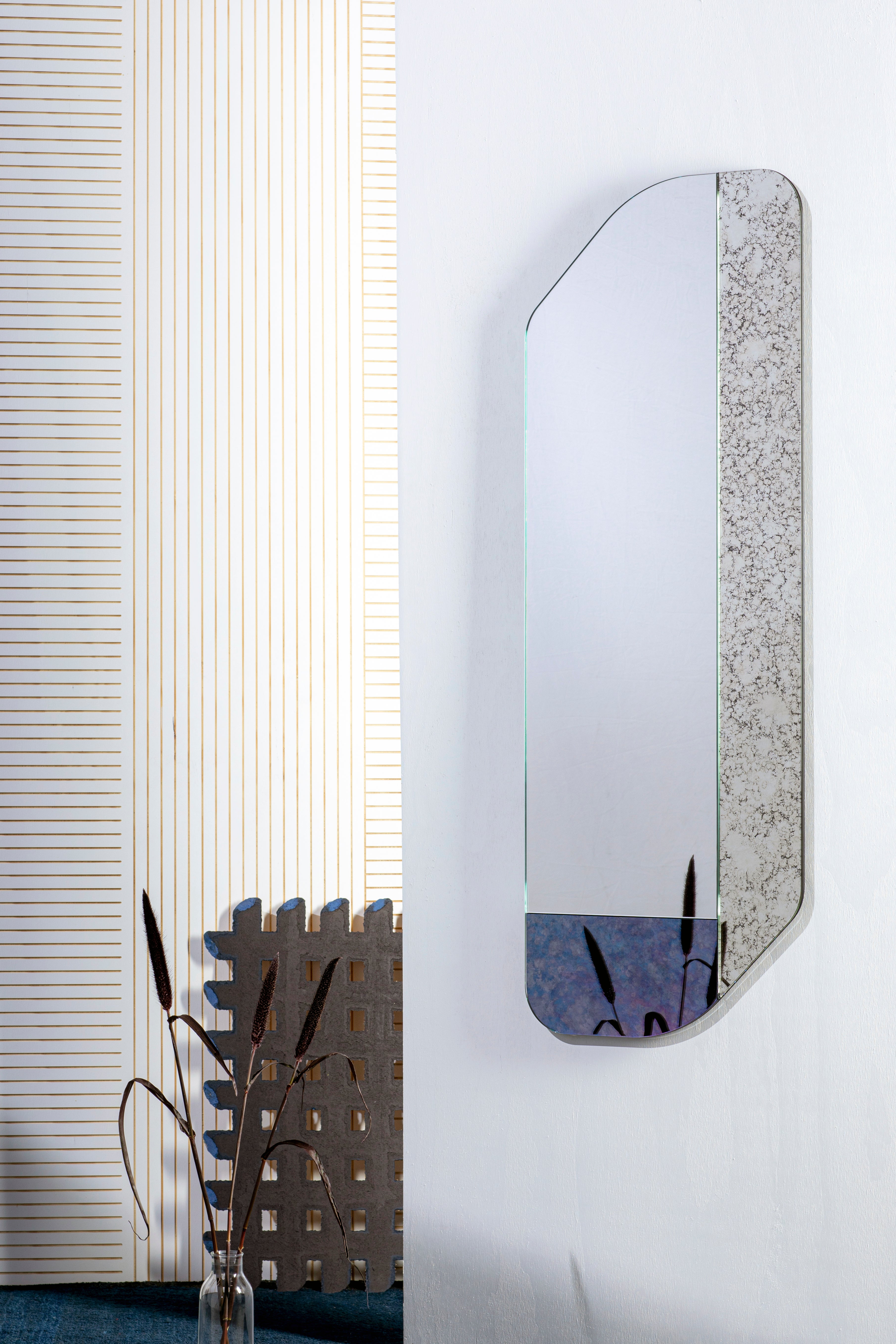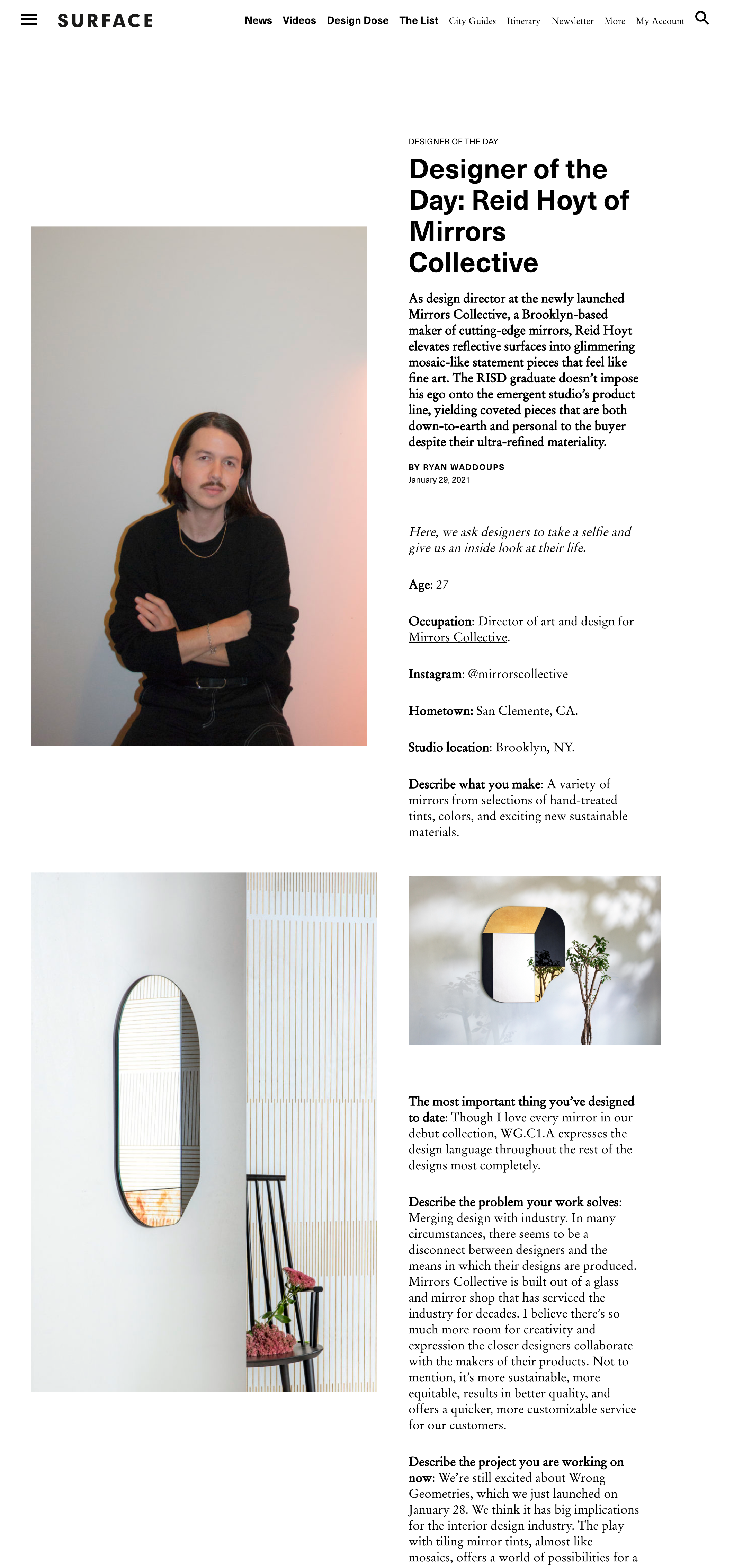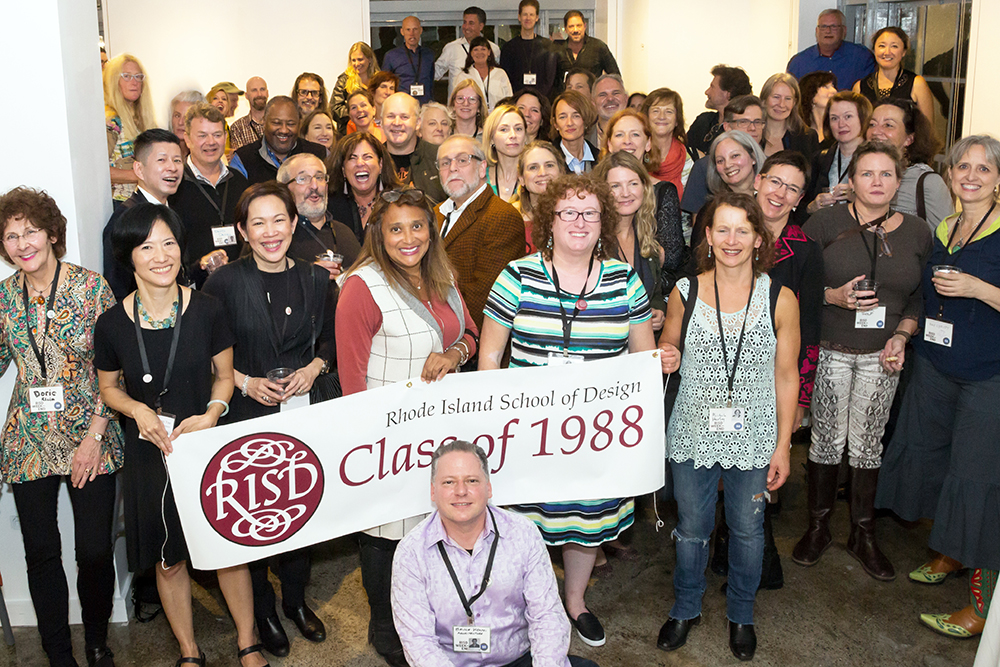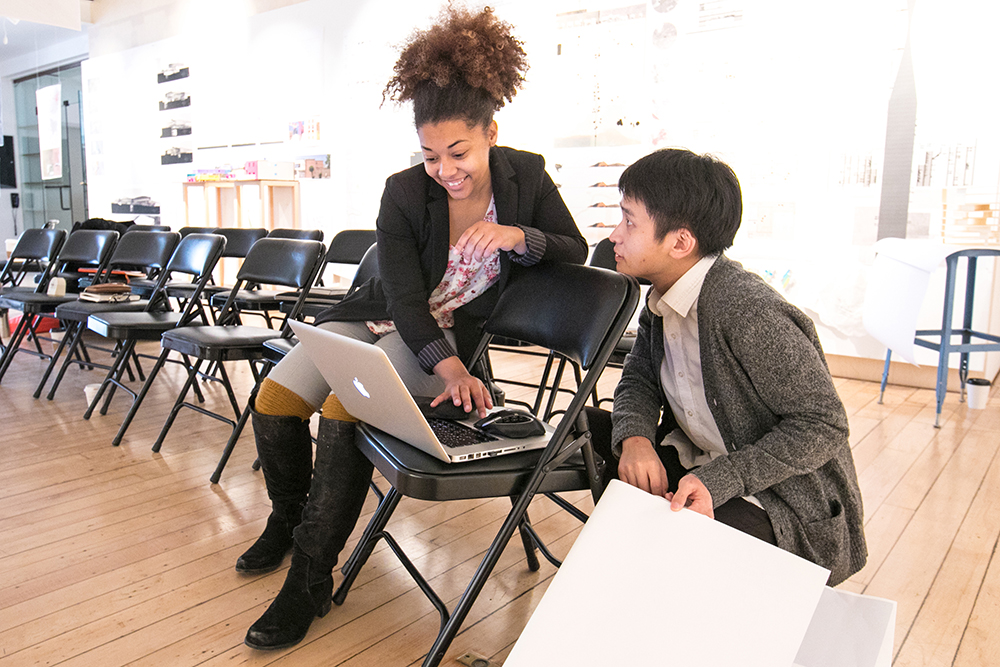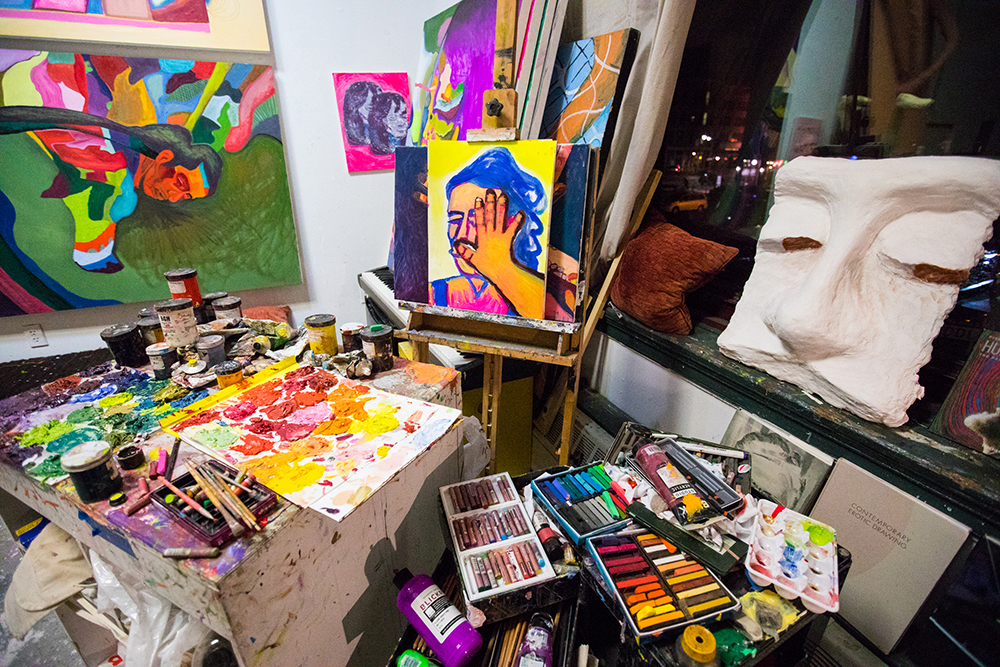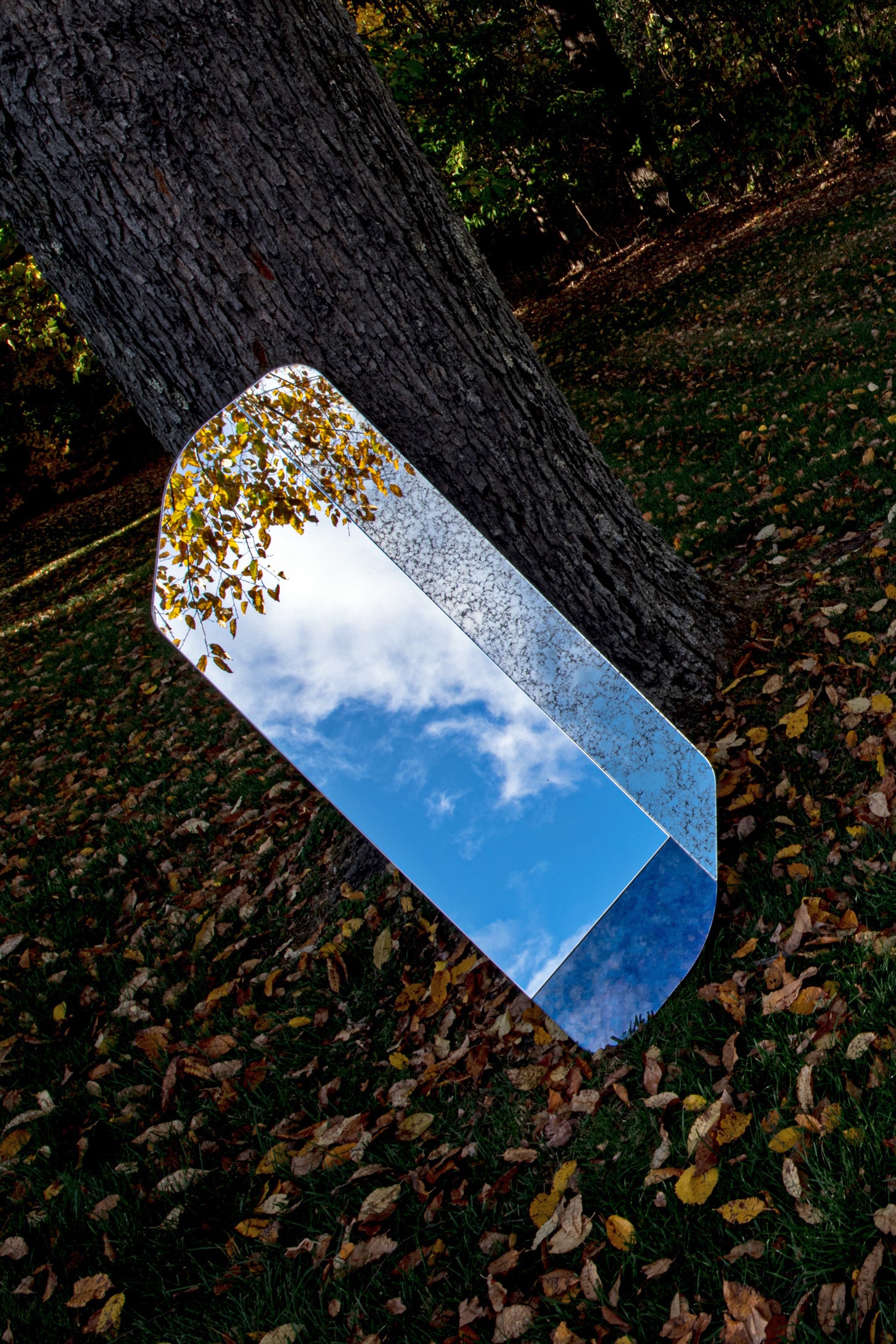
Mirrors Collective
Mirrors Collective just redefined contemporary craft with their first collection, Wrong Geometries.
Wrong Geometries, the debut collection of Mirrors Collective, explores the flattening of intersecting planes and shapes in slightly asymmetrical mirror designs. Butting edges of tiled, hand-treated mirror tints lead to the soft corners of the products’ contours.
The seven different designs of the collection, ranging from full body styles to more square forms, offer compelling counterpoints to play with in interior compositions. All edges of each piece of the mosaic-like amalgams are hand-polished, creating glimmering highlights as your eye wanders. The backings, made of pressurized recycled paper and natural resins, have a lustrous matte quality, complimented by rounded edges and custom engravings. These dazzling sensations are the result of a collaboration between design and craft in the heart of Brooklyn’s design scene.
The Wrong Geometries collection places Mirrors Collective (M Co) in the realm of other companies that have inspired the world of design in the last couple decades, like CC-Tapis and Mykita, where the process of making is seen in both the brand and the product. M Co is a newly launched designer and manufacturer of mirrors that is composed of Reid Hoyt and Valeriy Shvetsov. Reid is a RISD graduate who has worked as a furniture and lighting designer in NYC for the last several years. Valeriy is an established glass and mirror fabricator who has serviced several design brands in NYC for the last 16 years.
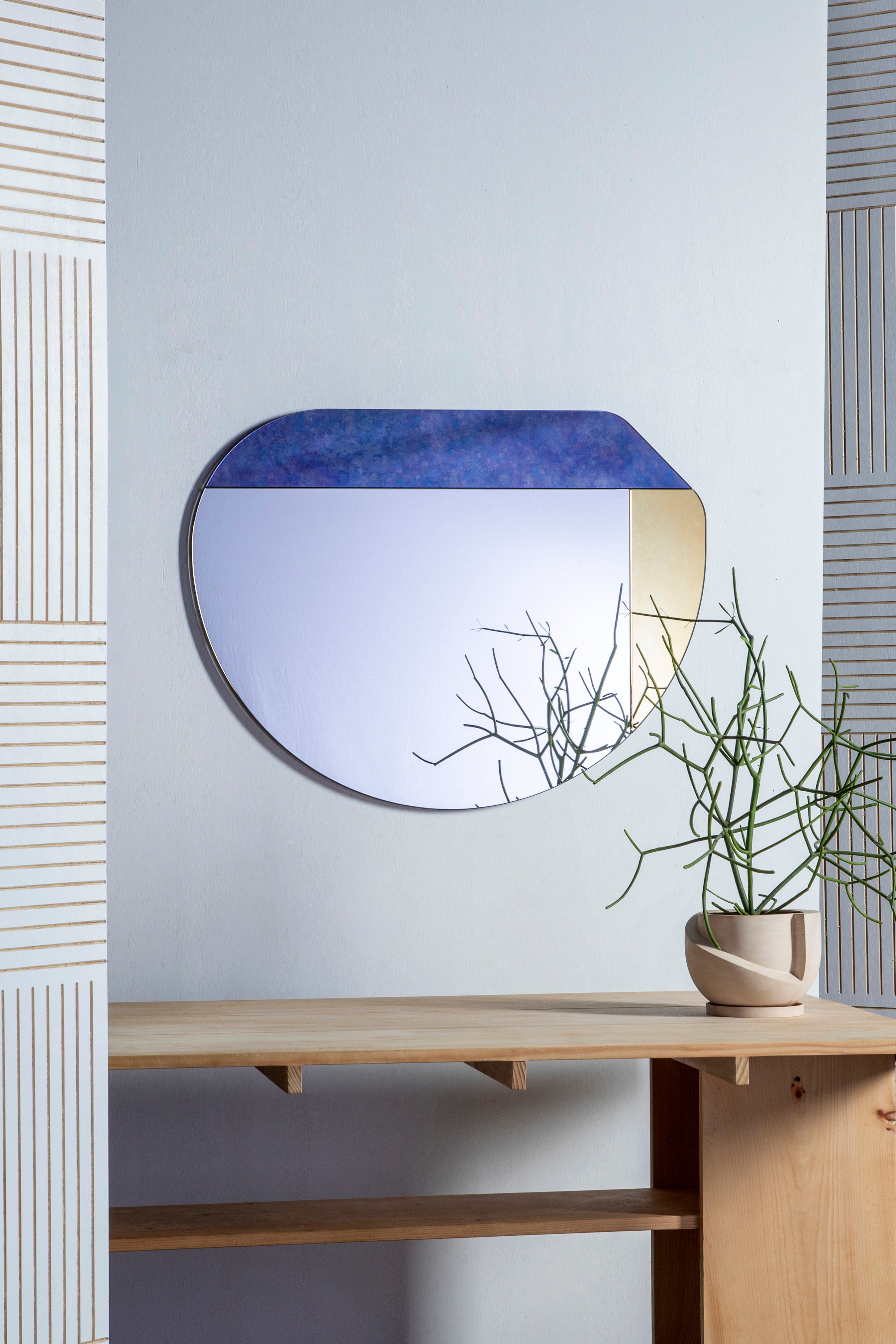
Early in 2020, Valeriy asked Reid to develop a brand and product line to sell directly to the trade and private customers. Having developed a design philosophy over the years that values more direct connections between designers and the source of their designs, Reid knew the perfect pitch for the opportunity... build everything, from the mirrors and their frames to the packaging, in-house. This would allow for more variety, more customization, more experimentation, and shorter lead times. Valeriy could now focus his attention on the craft and quality his factory could provide, and Reid could focus on the creative potential of the tools, techniques, and materials involved in making mirrors. The go-to source for mirrors, at the source.
Instead of focusing on a specific aesthetic that drives the decisions of the brand, Mirrors Collective aims to be a blank canvas for a range of design expressions and a go-to source for interior designers, architects, and private customers alike. Emphasizing the service they provide to the industry is their attempt to add more creativity to the growing support and expression of design in Brooklyn. Each design is made to order, allowing for further customization, while maintaining a lead time of one to two weeks. This is unheard of in the industry. Not to mention, they currently stock five different accent mirror tints that are used in their designs, which can be mixed and matched to the customer’s preference.
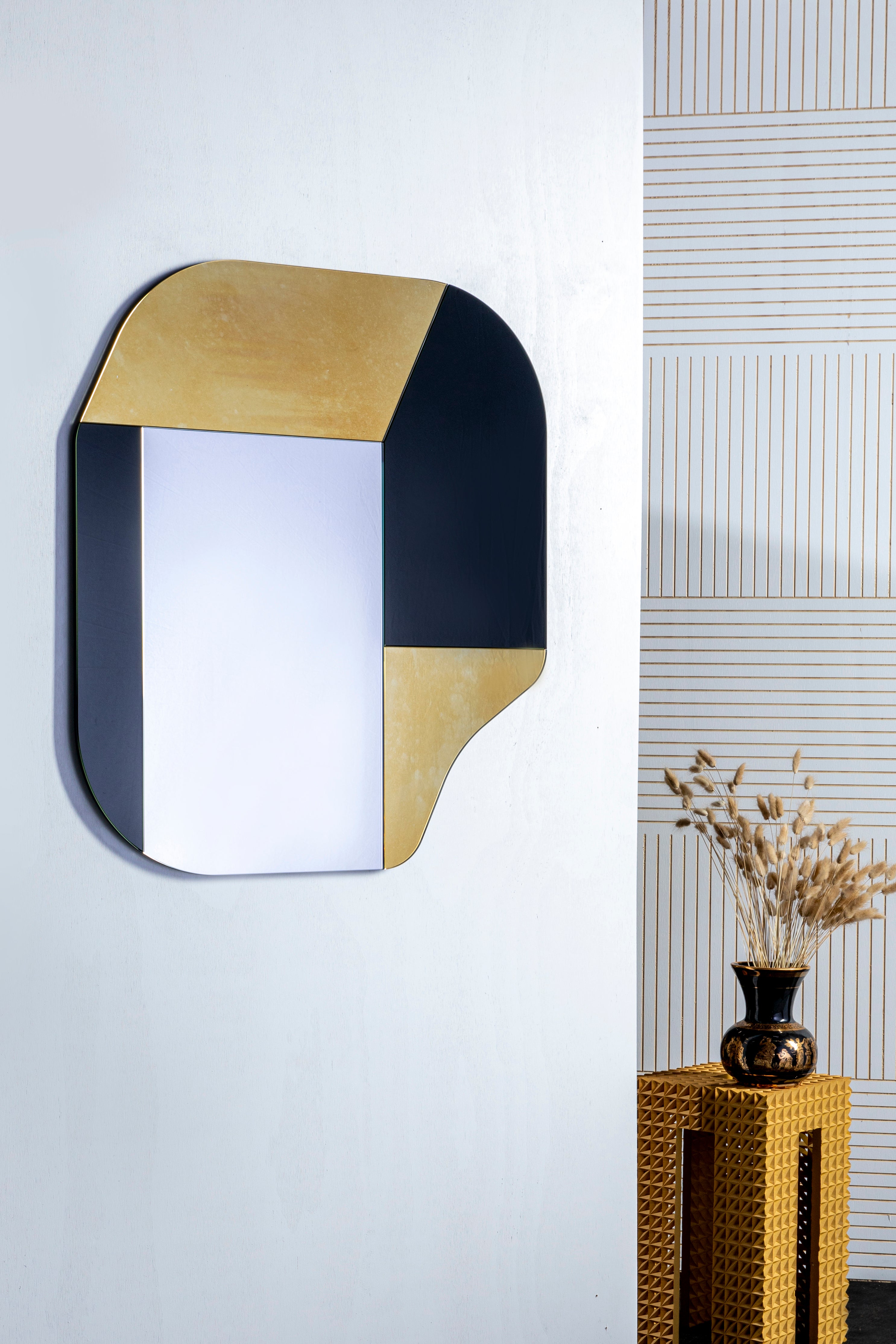
One of their main pursuits as a company is sourcing sustainable materials that are unexpectedly beautiful. The Wrong Geometries collection features Richlite, an architectural grade product made of pressurized recycled paper and natural resin. Because the material is dyed through the paper, it does not need to be painted, or laboriously finished, leading to greater efficiency and less waste. The typical model for most furniture design brands is to outsource production to third-party manufacturers, most of which are overseas, and then ship the parts to a separate studio to assemble and package. If that studio happens to be in the US, it is considered “Made in the US.”
If that studio happens to be in Brooklyn, it gets the stamp of “Made in Brooklyn.” While there are plenty of local exceptions, and the number of examples are on the rise, Mirrors Collective aims to take the model to the extreme. “We want to celebrate the concept of local manufacturing, not see it as a compromise,” says Reid, director of art and design. “The Wrong Geometries collection is just the start,” states Reid, “We are eager to continue pushing the limits of creativity and manufacturing with glass and exciting new sustainable materials.”
